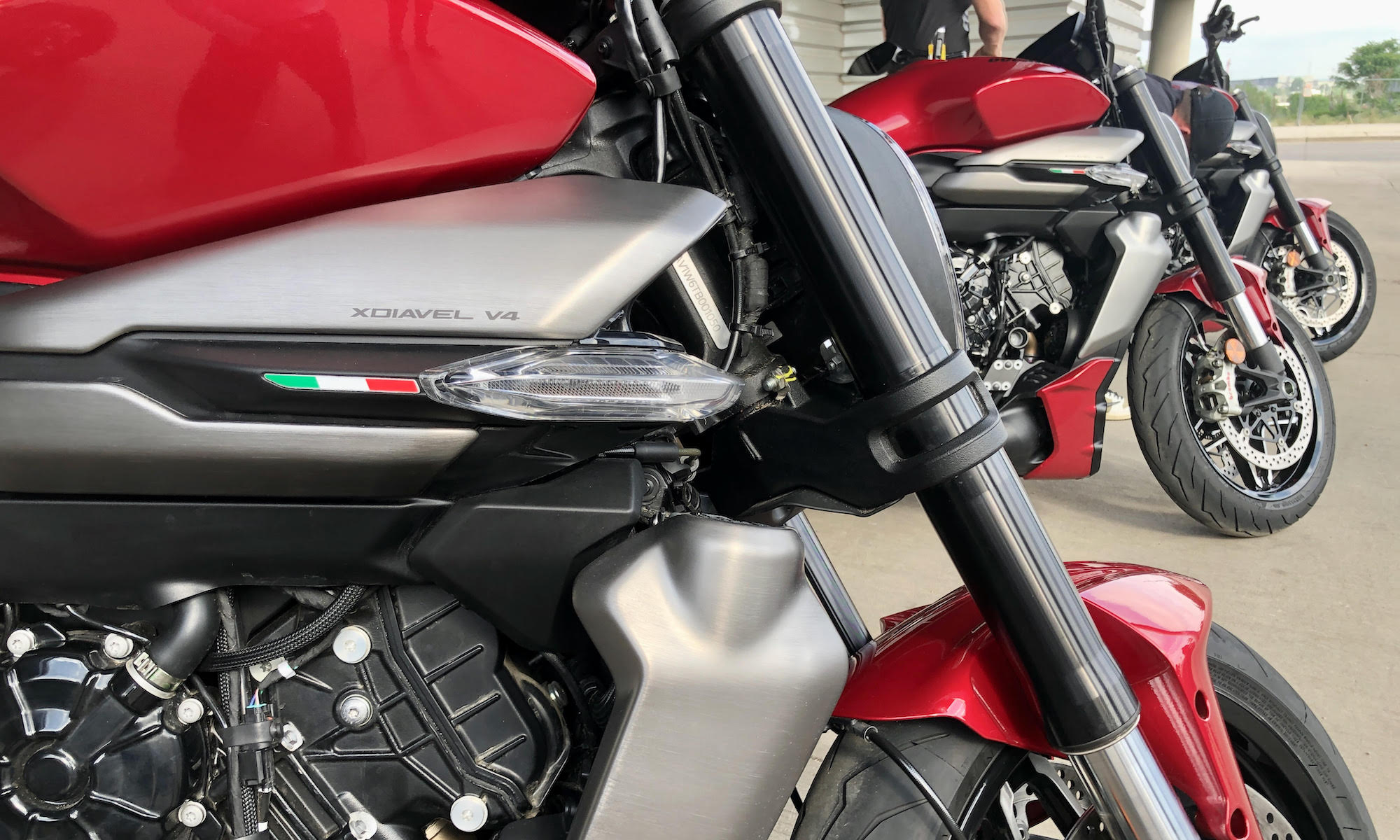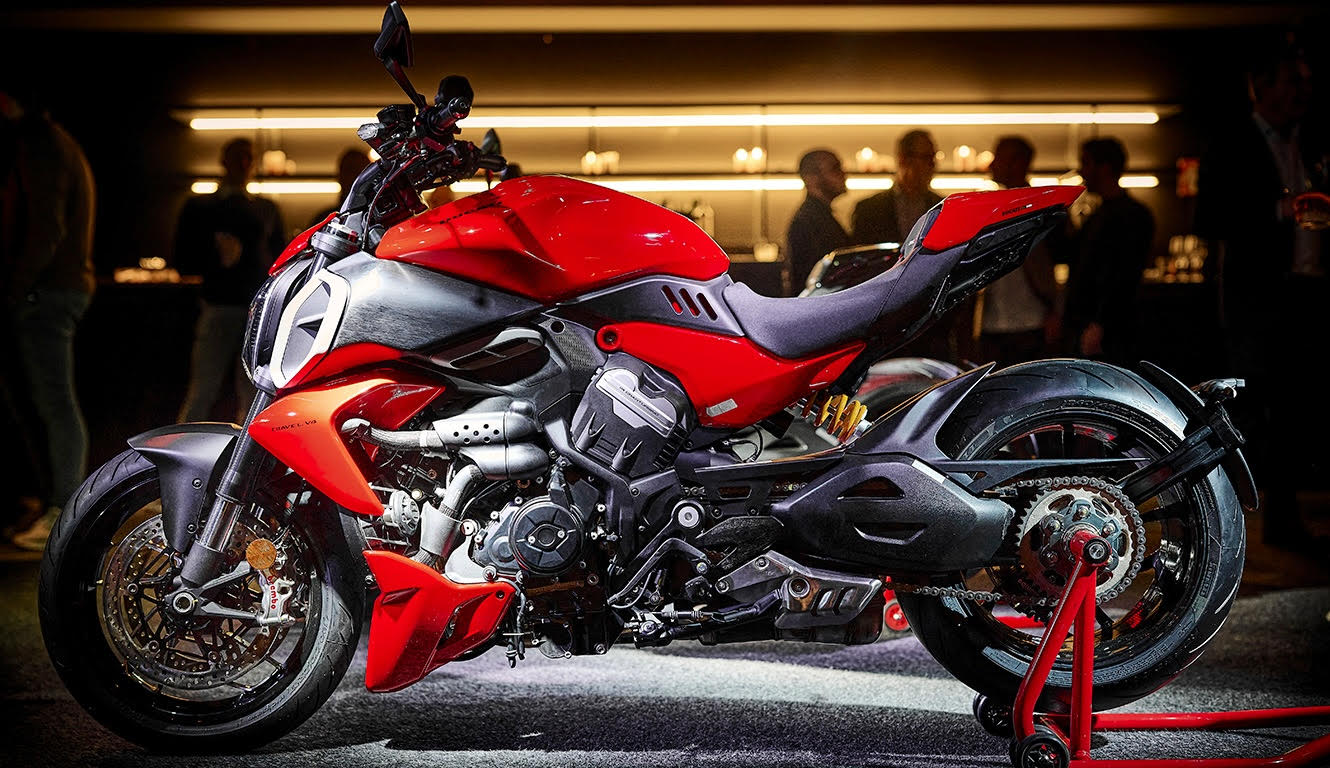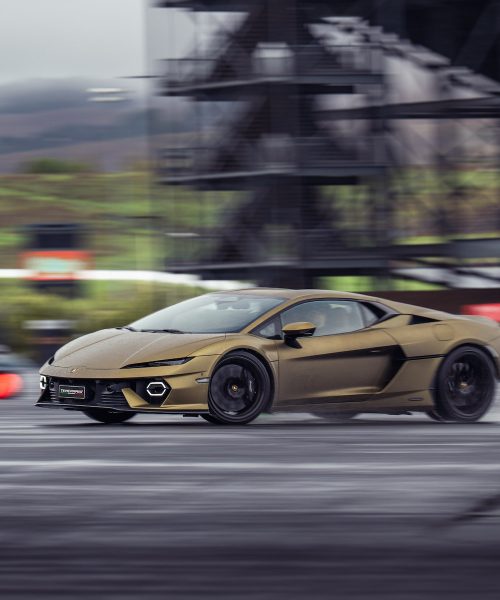Ducati’s new low-slung 168-horsepower muscle bike is meant to appeal to sport bike riders who have tired of the racer-crouch riding position but still want a sophisticated and powerful ride.
That’s according to old friend Jason Chinnock, who is Ducati North America’s CEO. Chinnock’s not just the CEO; he’s also put in his miles on the race-replica bikes that build Ducati’s reputation for performance.
The XDiavel V4’s 1,158cc four-cylinder engine is the bike’s centerpiece, both visually and technically. It even earns a spot in the model’s complete name: XDiavel V4. The first-generation Diavel had similar drag strip-ready styling with a low seat and raked fork jutting the front wheel far out ahead, but the titular V4 is what makes this Ducati next-level (feel free to put in your own words).
The original Diavel was powered by one of Ducati’s signature V-twin engines featuring the company’s traditional idiosyncratic desmodromic valve actuation. In a desmo engine, the camshafts both open and close the valves rather than having conventional valve springs that provide the closing action.

For the XDiavel V4, Ducati switched to a V4 engine used previously by its Multistrada dual-sport model. The speed and power of the particular V4 engine in the Multistrada family has earned the brand a wide swath of loyal fans, meaning these bikes turn up in surprising places. For example, in Dax Shepard’s 2017 take on CHiPs, the writer/director/actor took the opportunity to feature Ducatis front and center, despite there being no realistic reason for police officers to ride off-road Italian motorcycles.
The V4 engine brings some interesting features to the XDiavel. To start, it uses regular, spring-actuated valves rather than desmodromic actuation. But get this; Ducati spins the V4 backward! Normally, motorcycle engines spin in the direction of travel, but Ducati adds an extra gearset that lets the backward-spinning V4 propel the XDiavel forward.
This has the benefit of using the engine’s gyroscopic effect to cancel the gyroscopic effect of the spinning wheels. The gyroscopic effect stabilizes the bike at speed, but for a heavy bike with a long wheelbase due to the aforementioned raked fork, it can make the bike ponderous when leaning into curves. Riding the XDiavel V4 through the sinuous mountain roads between Denver and Estes Park, Colorado, the benefit of this configuration was obvious, as the bike didn’t feel like a stretched-out 500+-lb. cruiser while slicing through the curves.

Another interesting technical aspect of the V4’s design is the cylinder firing cadence. Typical inline four-cylinder engines fire at even intervals. This gives Japanese sport bikes their characteristic high-rpm shriek. As a traditional purveyor of V-twin-powered machines with their loping exhaust note, Ducati wanted a more distinctive sound for its V4.
Four-stroke four-cylinder engines require 720 degrees (two rotations) to complete their firing cycle for all four cylinders. In an inline engine, this means that cylinders fire regularly at 180-degree intervals.
In what Ducati terms “Twin Pulse,” the V4 clusters its combustion events, with the second cylinder firing only 90 degrees after the first. The engine coasts briefly until firing the third cylinder after another 200 degrees, followed 90 degrees later by the fourth cylinder. That leaves almost a full rotation (340 degrees) of silence before the cycle starts over again. This yields a syncopated sound, with two quick explosions followed by another pair of closely spaced combustion events and then nothing.
The result is an exhaust note with the texture to assure the rider that they are engaging in a properly visceral experience. The XDiavel V4 also features cylinder deactivation, which shuts off the rear bank of cylinders at idle and part throttle. Unlike automotive V4, which drone in V4 mode, the XDiavel’s engine sounds like a V-twin because of the spacing of the remaining combustion events.
Cylinder deactivation provides some modest fuel economy benefit, but perhaps more importantly it slashes the waste heat generated while wading through sluggish traffic, providing the rider better comfort.

An additional benefit of the clustered power stroke events is the engine’s tractability. This was the theory behind “big-bang” MotoGP engines, which were used because the split-second interruptions in power delivery turned out to be enough to give riders a better ability to manage wheelspin while accelerating.
That has to be a good idea, but it isn’t needed on the XDiavel V4 because of the electronic rider aids, whichare even better than MotoGP riders at controlling wheelspin. In addition to providing traction control, the computer lets the rider select from four riding modes (sport, touring, urban, and rain), each of which employs one of the three engine power modes (high, medium, and low).
In high power mode, the XDiavel’s V4 delivers its 168hp with quick response to the twist grip throttle. In medium, you still get full power, but the engine responds more judiciously to the rider’s yanks on the twist grip. Finally, low-power mode cuts peak output to 115hp and simultaneously employs the slow-responding throttle map. The low setting of 115hp is still a lot for a motorcycle, but getting onto a bike another rider left in rain mode, with its corresponding low engine power level gave me an instant contrast with the high-power setting that made the XDiavel feel sluggish.
There is also a quick-shift ignition interrupt meant to let riders bang off upshifts without releasing the throttle. But this is pretty much the way you upshift with other motorcycles, and I didn’t discern that the XDiavel’s upshifts were any smoother than for other bikes without this feature.
Ducati’s interface for letting the rider adjust these settings while riding is well designed. Pressing a button and twisting a dial on the left handlebar provides quick and easy access to the various settings.
The XDiavel’s rider controls all have a rider-friendly progressive response. The switches and brake response are all taut, but provide enough movement to let the rider feel that actions are intentional. This is contrast to BMW’s controls, which rely more on pressure rather than movement, making it harder to be sure a button is pressed and harder to modulate the brakes for smooth deceleration.
With its smooth torque delivery, user-friendly clutch, and linear brake response, the XDiavel provides impressive ease of use to go with its high performance and visceral engine character.
Slicing through the mountain passes between Denver and Estes Park, the Diavel demonstrated that even a long-wheelbase power cruiser can dance. The backward-spinning engine surely contributes to the bike’s agility, but so do the 50mm inverted fork and the Sachs rear shock that has 1.4 inches of additional travel.
My day in the saddle also benefited from upgrades to the seat, which include an extra 2.1 inches of foam under the rider’s butt. The passenger’s seat has 50 percent more area than before, making that a more reasonable place to sit.

Because Ducati’s planners know that cruiser bikes are popular in America, they’ve delivered the XDiavel with forward-set footpegs and controls like you might find on a Harley-Davidson. The handlebar correspondingly stretches back to the rider’s splayed-out position.
But recognizing the XDiavel’s potential and its appeal to non-traditional cruiser riders, Ducati is offering an optional footpeg location that places the rider’s feet in a more normal position beneath them. Riding the bike in this configuration is transformative and should help deliver the experience that sport bike refugees are seeking.
That position leans the rider slightly forward, into the wind, so you feel less like a sail and more like a rider. But the result is that the handlebar is now too close to the rider. Fortunately, Ducati has already realized that and is preparing a flatter, more forward optional handlebar for riders who choose the mid-mounted footpeg option.
This is how the company can attract those former sport bike riders who Chinnock is targeting. They will be thrilled if they give the XDiavel V4 a try, and their backs will probably thank them too.






